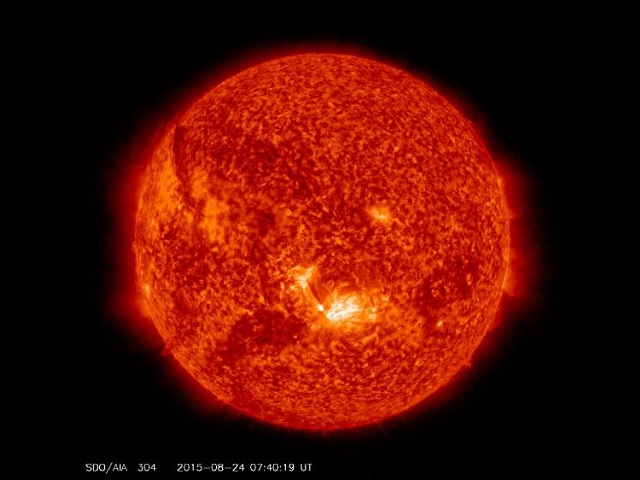NASA’s Solar Dynamics Observatory is doing a fine job monitoring the Sun for huge coronal mass ejections (CMEs), solar storms and other such events on our star and all the while it is carrying out scientific observations the SDO also captures and delivers some of the most breathtaking photos of the Sun.
That’s what happened on during the 40-hour timeframe when the SDO spotted a small yet complex mass of plasma gyrated and spun over the surface of the sun from September 1 to 3. The blob of plasma was flung out on September 1 after which it started spinning in a furious manner.
NASA notes that while the plasma was spinning over the surface of the Sun, it was also being influenced by the strong magnetic fields that were stretching and pulling it back and forth. However, these forces were not able to break apart the sequence.
Based on the measurements, the temperature of the ionized iron particles was about 2.8 million degrees C. (or 5 million degrees F).
Prior such events
This is not the first time that NASA’s SDO has delivered such amazing images and video footage. On August 24, SDO observed the Sun fire off a mid-level solar flare. Solar flares are basically bursts of high-energy radiation from the Sun, but these cannot pass through Earth’s atmosphere to physically affect humans on the ground, however — when intense enough — they can disturb the atmosphere in the layer where GPS and communications signals travel.
Solar flares have been classified into three categories — C, M or X. X flares are the strongest and they are 10 times more powerful than M flares, which in turn are 10 times more intense than C eruptions.
According to NASA, the solar flare on August 24 was registered as an M5.6. The number provides more information about its strength. An M2 is twice as intense as an M1, an M3 is three times as intense, etc.

Prior to that SDO captured a solar prominence that looked like an Eiffel Tower on Sun. NASA noted in the accompanying post that the single plume of plasma rose from the surface the Sun, twisted and spun around, all the while spewing streams of particles for over two days from August 17 to 19 before breaking apart.

Credits: NASA/Goddard/SDO
Prior to this in July, SDO managed to grab a very rare event – Venus transit. In this event Venus passes between Earth and the sun wherein the planet appears to us as a dark dot steadily making its way across the sun’s bright face. This allowed astronomers to make unprecedented measurements of the Venusian atmosphere providing clues on the elements that are layered above Venus’s surface.

